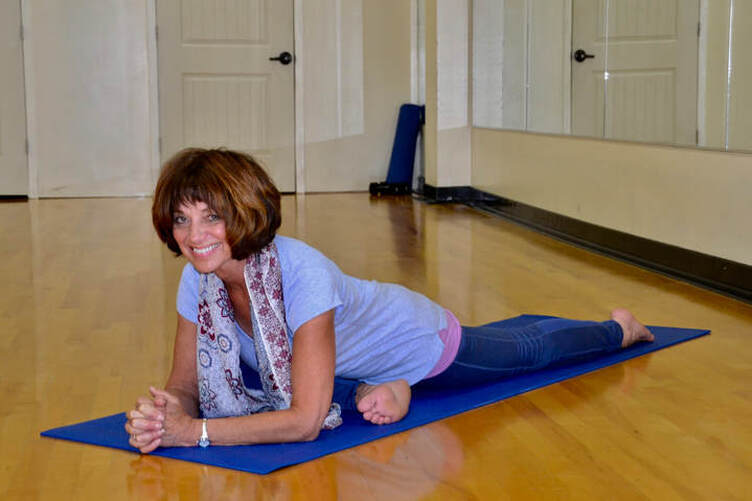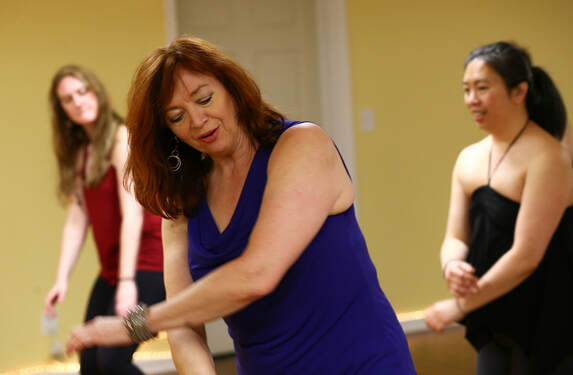|
“True yoga is not about the shape of your body, but the shape of your life.” -- Aadil Palkhivala
Welcome to Yoga at its most welcoming and inviting! Susan Westlund returns with her Hatha Yoga classes starting on October 11. The idea is to give new and returning yogis a chance to get a taste of the various forms yoga can take. Each week we’ll offer a different style of yoga, beginning with a gentle class where we will share an overview of class structure and the language used in most all yoga classes regardless of who teaches them or where they are offered. Although we encourage you to join us for the entire series, it is not required. You may pick and choose those that most appeal to you or that fit into your schedule. Before we get into that, just know this: You don’t have to be a pretzel to practice yoga! Yogis come in all shapes and sizes. More that 2,000 years old, yoga has guided all sorts of practitioners to greater health, clarity and joy through self-discovery. It is an inward practice that helps us learn to recognize and change our habits, to appreciate and enjoy our being. It is non-competitive and non-judgmental. We use our breath and body sense to guide us throughout our practice and become more skillful in our everyday lives. The classes are listed below and are included in your Five Class Pass or Unlimited Membership. The usual drop in fee of $18 (plus tax) also applies. Week One--Intro to Yoga: This gentle Hatha class will offer brief explanations of the benefits and origins of yoga, how it differs from other physical practices as well as what to expect in most any yoga class. Please bring your questions! The class is designed to help you to select and be ready for yoga classes anywhere. Requirements: Dress comfortably with an open heart and curiosity on your sleeve. Week Two--Gentle Yoga: Takes a gentle approach to slow, centering stretches. Links the breath to slow, simple movements. Builds flexibility, increases range of motion and body awareness. Ideal for new and continuing students—anyone who wants to find calm and feel more ease in their body. Week Three--Flow/Vinyasa Yoga: Moves with the breath in a dynamic flow of postures that build heat, stretch and strengthen the body. Pace is slow to moderate to allow for proper alignment and mindful transitions. Sun salutations, standing poses and balances central to the flow but seated and reclining postures also come into play before easing into restorative svasana. Step-by-step guidance includes variations that help you dial back more challenging postures deepen and extend them. Week Four--Power Yoga: Strengthens and stabilizes through standing and weight-bearing poses for ALL LEVELS of yogis. Longer holds are used to build muscle and increase stamina, but a balanced practice that includes movement, flexibility, and breath-oriented mindfulness remains the hallmark of this and all yoga classes. Variations on the poses make this a super-accessible class! Week Five--Yin Yoga: Opens and stimulates the fascia and core connective tissue by holding moderate stretches for longer-than-usual times, sometimes for several minutes. Calms the mind and encourages a sense of well-being through mindful breathing. Complements sports’ activities, aerobic exercises and the more “yang” style dynamic yoga practices. Generally targets the connective tissues of the hips, pelvis, and lower spine. Suitable for beginners as well as experienced yogis. Week Six--Restorative Yoga: Supports deep rest. Holds nurturing poses effortlessly for long periods, allowing the body and mind to let go and relax. Steady, deep breathing and slow, deliberate transitions maintain the calming, restorative effects of the “relaxation response.” Blocks, bolsters, and straps are often used as supports, allowing the body to remain in the postures without effort. This practice benefits all who can use a little relaxation. Week Seven--Partner Yoga: Adds a playful twist to postures and flows. Levity and laughter accompany pairs trying to keep their rocky boat poses afloat or finding their roots in tottering tree poses. Forward bends and backbends deepen in the press and pull of a partner. Connections with the Self and Other are brought into focus with mirrored movement and breathing. The general name for the physical practice is Hatha yoga, the umbrella under which the various styles of yoga exercise classes fall. That said, when a class is listed on a yoga schedule as Hatha, it will generally include elements of more specified styles and approaches. It will generally be slow to moderately paced and will have modifications for beginners through more experienced yogis. Hatha yoga includes both yin and yang--or restorative and dynamic--aspects of the practice. Slow to moderately paced flows with modifications for beginners as well as more experienced yogis. Sun salutations and standing poses, seated and reclining postures, as well as a variety of twists, balances and inversions will be introduced. Yoga exercise classes differ from other forms of exercise primarily by the intentional focus on the breath. A full class of any style will generally include forward bends, backbends, twists, inversions, balances, stretches and strength building poses even if they are done in subtle--or very gentle--forms. By Melanie
Using breath as healing and centering device did not always come naturally to me. It took a long time, in fact, for me to weave mindful breathing throughout my practice -- not merely exhaling into kicks, blocks and punches, but finding the rhythm and flow throughout the dance arts as well. Now I end every class with a bit of focused inhalation and exhalation to help coax myself and students more deeply into relaxation and FloorPlay and to return to center before stepping out. More than this, however, I'm a huge proponent of maintaining that practice throughout the day. It's one of the easiest means of remaining fully embodied in each moment, and bringing ease to each action. And breath is central to mind-body wellness, playing a key role in centering our emotions and calming spirit. Yoga masters and martial artists have long touted the importance of mindful breathing. But as of 2018, thanks to researchers at Trinity College Dublin, we now have scientific data that explains the neurophysiological link between cognition and breath. Every inhalation and exhalation directly affects the levels of noradrenaline, a natural chemical messenger in the brain released when we are challenged, curious, focused or emotionally aroused. It's brain food. So when we set our Focus and Intent at the start of each Nia class, that begins the process of teasing forth more of that lovely brain food. Once we step in, warm up and get moving, breath helps to keep producing that noradrenaline enabling the brain grow new connections. So in the same way that exploring a routine through movement challenges our neural mapping, being mindful about the way we breathe through each moment and positively shift the chemistry of our brains. Breath increases one's ability to focus on sensation, augmenting positive emotions along the way in addition to decreasing emotional reactivity. Another way of putting it is, if I feel energized and uplifted after class, that's not simply due the music, movement and magic. How I breathe plays a role in that sensation. So through each class, when an instructor invites you to pay attention to a sensation -- to a body part, or a feeling -- start with your breath. Even long after you've stepped out of class set a few minutes aside for yourself to breathe in, fully and deeply, and release. If you want more, consider building a practice. Click here to read exercises created by Dr. Andrew Weil. The brain and body will thank you for it! |
Movement Meditations
Where our instructors share information and observations about what's going on at Move2Center Studio! Archives
April 2022
Categories |


 RSS Feed
RSS Feed